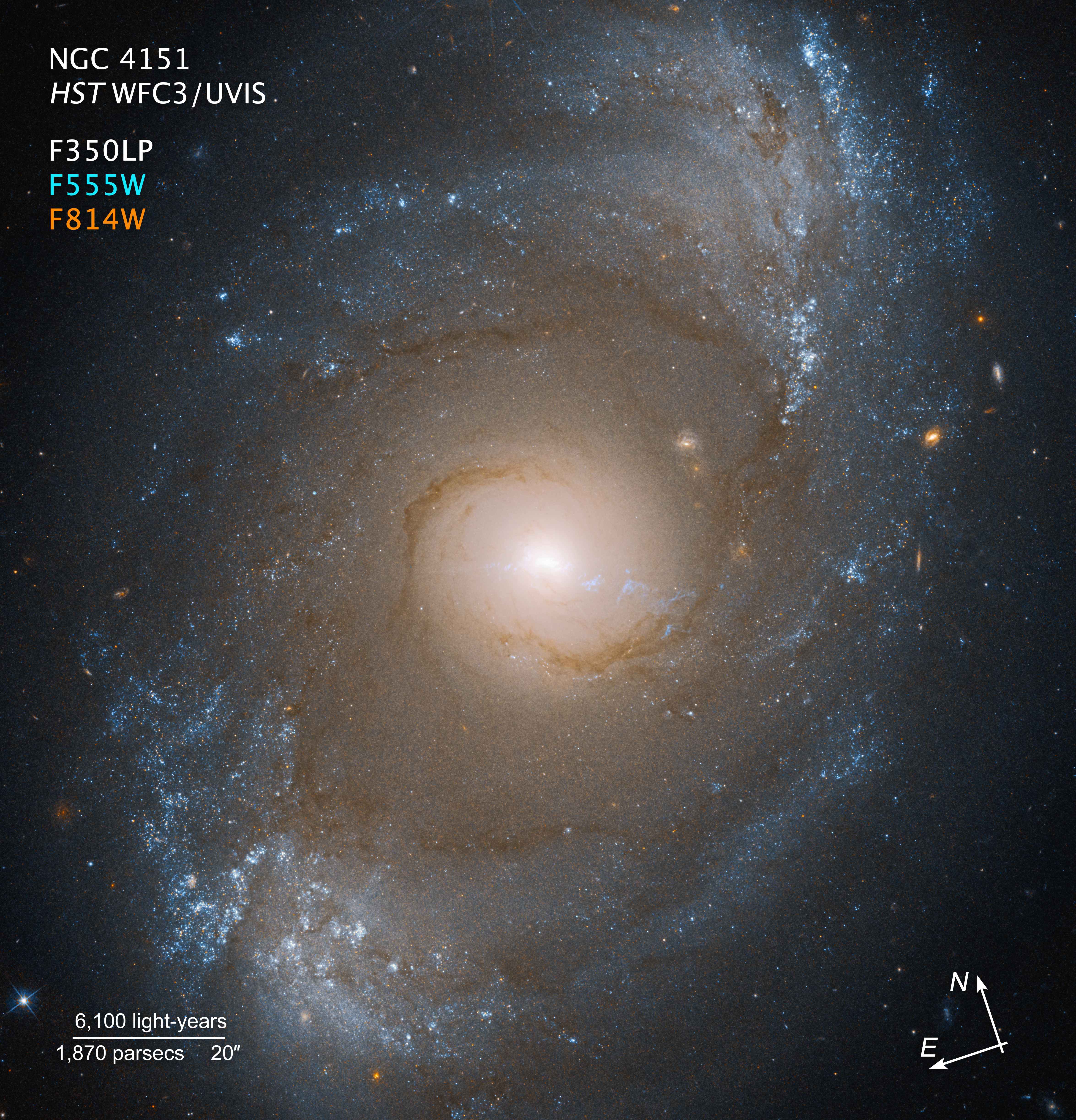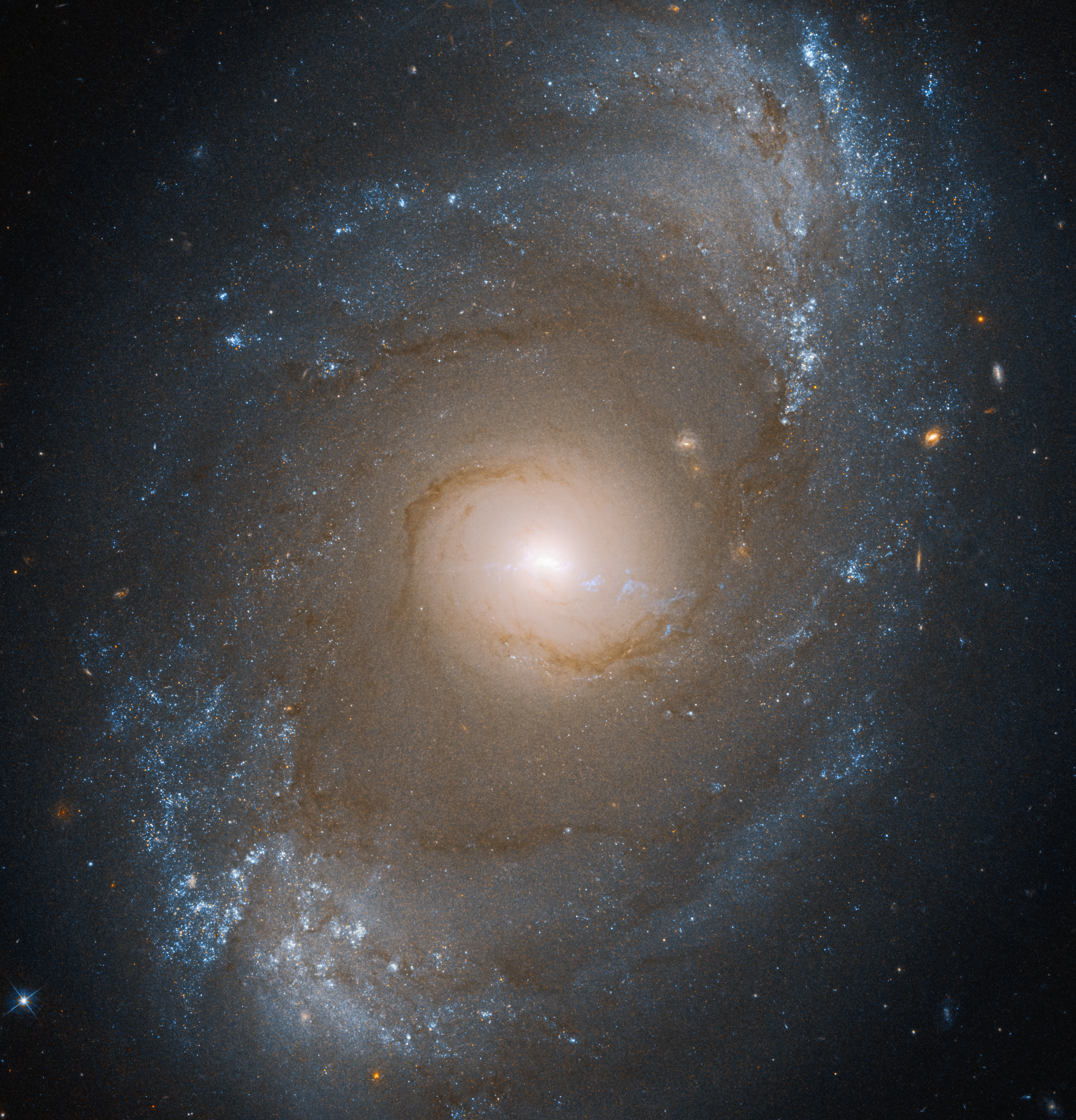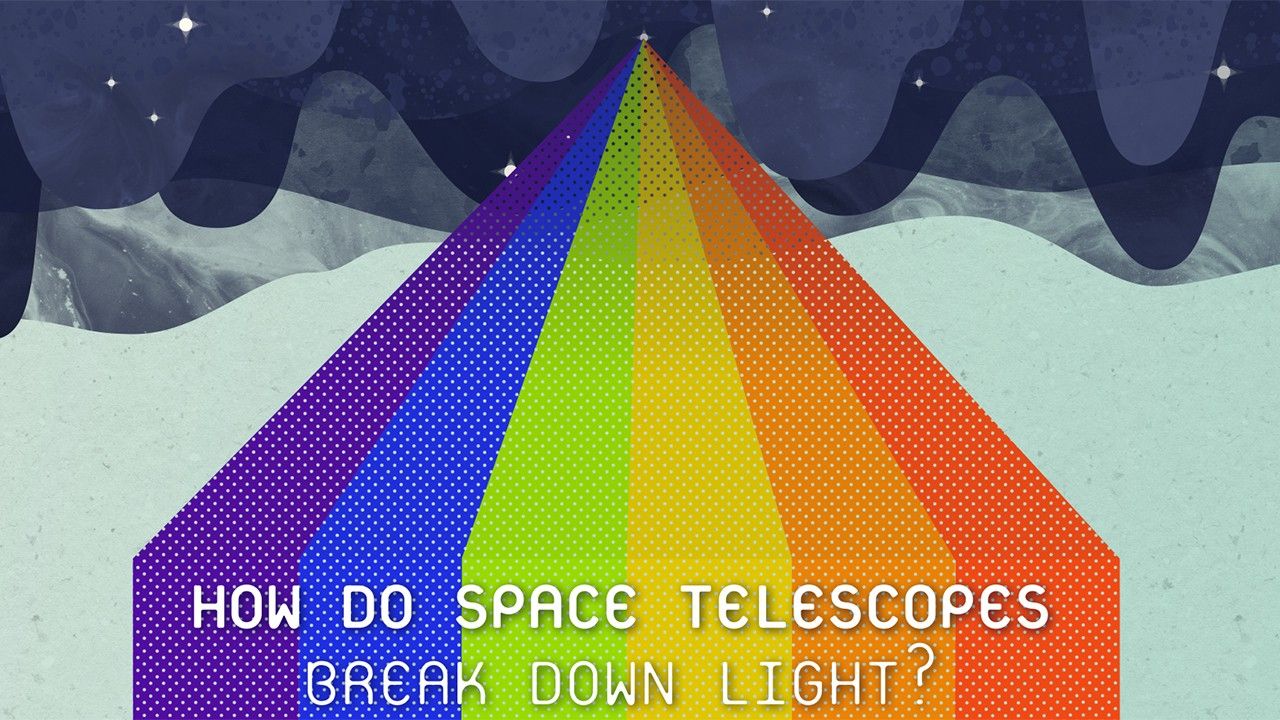1 min read
NGC 4151 (Hubble Compass Image)

This image of galaxy NGC 4151, captured by the Hubble Space Telescope’s Wide Field Camera 3, shows compass arrows and labels for reference.
The north and east compass arrows show the orientation of the image on the sky. Note that the relationship between north and east on the sky (as seen from below) is flipped relative to direction arrows on a map of the ground (as seen from above).
The scale bar is labeled in light-years, which is the distance that light travels in one Earth-year. (It takes 6,100 years for light to travel a distance equal to the length of the bar.) One light-year is equal to about 5.88 trillion miles or 9.46 trillion kilometers. The field of view shown in this image is approximately 440,000 light-years across.
This image shows visible and ultraviolet wavelengths of light that have been translated into visible-light colors. The color key shows which filters were used when collecting the light. The color of each filter name is the visible light color used to represent the infrared light that passes through that filter.
About the Object
- R.A. PositionR.A. PositionRight ascension – analogous to longitude – is one component of an object's position.12:10:32.6
- Dec. PositionDec. PositionDeclination – analogous to latitude – is one component of an object's position.+39:24:21
- ConstellationConstellationOne of 88 recognized regions of the celestial sphere in which the object appears.Canes Venatici
- DistanceDistanceThe physical distance from Earth to the astronomical object. Distances within our solar system are usually measured in Astronomical Units (AU). Distances between stars are usually measured in light-years. Interstellar distances can also be measured in parsecs.62 million light-years
- DimensionsDimensionsThe physical size of the object or the apparent angle it subtends on the sky.Image is 2.4 arcmin across (about 440,000 light years)
About the Data
- Data DescriptionData DescriptionProposal: A description of the observations, their scientific justification, and the links to the data available in the science archive.
Science Team: The astronomers who planned the observations and analyzed the data. "PI" refers to the Principal Investigator.The HST observations include those from programs 13765 (B. Peterson) - InstrumentInstrumentThe science instrument used to produce the data.WFC3/UVIS
- Exposure DatesExposure DatesThe date(s) that the telescope made its observations and the total exposure time.07 Dec 2015 - 18 Feb 2016
- FiltersFiltersThe camera filters that were used in the science observations.F350LP, F555W, F814W
- Object NameObject NameA name or catalog number that astronomers use to identify an astronomical object.NGC 4151
- Object DescriptionObject DescriptionThe type of astronomical object.Spiral Galaxy with Active Galactic Nucleus
- Release DateOctober 17, 2018
- Science ReleaseHow to Weigh a Black Hole Using NASA’s Webb Space Telescope
- CreditImage: NASA, ESA, Joseph DePasquale (STScI)

These images are a composite of separate exposures acquired by the WFC3 instruments on the Hubble Space Telescope. Several filters were used to sample narrow wavelength ranges. The color results from assigning different hues (colors) to each monochromatic (grayscale) image associated with an individual filter. In this case, the assigned colors are: Luminosity: F350LP Cyan: F555W Orange: F814W
Related Images & Videos

NGC 4151 (Hubble Image)
This image of galaxy NGC 4151, captured by the Hubble Space Telescope’s Wide Field Camera 3, shows compass arrows and labels for reference. The north and east compass arrows show the orientation of the image on the sky. Note that the relationship between north and east on the...
Share
Details
Laura Betz
NASA’s Goddard Space Flight Center
Greenbelt, Maryland
laura.e.betz@nasa.gov
NASA, ESA, Joseph DePasquale (STScI)
































